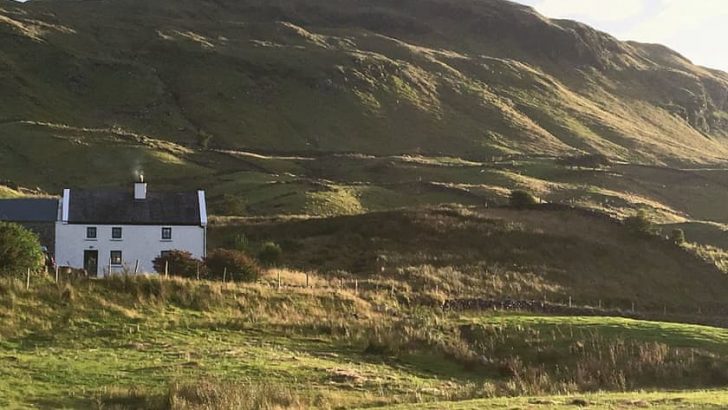The Lost Gaeltacht: the Land Commission Migration – Clonbur, County Galway to Allenstown, County Meath
by Martin O’Halloran (Homefarm Publishing, €29.00. Available online from Mayo Books)
Ian d’Alton
On March 29, 1940, two buses left Clonbur village, sandwiched between Loughs Mask and Corrib, Co. Galway. They carried 24 apprehensive families to a hopeful new life in Co. Meath.
Economically, this sort of ‘reverse Cromwellianism’ saw them moving to better land; culturally, it was also one of the official government attempts to establish Irish-speaking colonies in the east of Ireland.
Martin O’Halloran comes from one of those families. His book was motivated by the importance, to him, of knowing how and why his family ended up in Meath.
Reflecting his background in public administration and the private sector, he has approached this task with admirable thoroughness and detachment.
He has drawn upon scholars and experts to help him in his task.
The result is a fascinating account, as he says, “of a major and very significant internal migration of a Gaeltacht colony in Ireland that failed through political misadventure, abandonment and administrative indifference”.
O’Halloran characterises the area as being a ‘rural slum’”
The families in Clonbur were tenants of the Ardilaun (Guinness) estate. Relations with the landlord were not good – the Guinnesses resisted selling the land to the tenantry under the UK land acts. Social and economic conditions were bad.
O’Halloran characterises the area as being a “rural slum”; it is perhaps not difficult to see why families were prepared to uproot themselves into a new and possibly hostile new world. At least it wasn’t as far away as America, Britain or Australia.
Following independence, the 1923 Land Act accelerated tenant possession, and in 1926, the Gaeltacht Commission report advocated spreading native Irish speakers throughout the State to bolster an ‘Irish Ireland’, socially and linguistically. That was the background to this particular migration.
One of the most valuable sections of the book for scholars details how the families were chosen by the Land Commission (then in charge of resettlement), and O’Halloran shows how – and why – this was done.
Destination
The destination was the former Craig-Waller estate in Co. Meath, and O’Halloran details the land and the landed family which had owned it. Relations between landlord and tenant here seem to have been more cordial than those in Co. Galway.
But there was political hostility to the migrants, on the basis that local people should have benefited more from the estate’s division.
Mostly that didn’t last, though, and integration generally became the norm. O’Halloran details how the migrants fared.
The colony’s proximity to Dublin ensured a measure of economic success. It was largely a social success, too, and he details the part women played, the importance of sport, and how education was critical to its development.
It was, of course, a ‘Catholic’ migration, and O’Halloran chronicles the centrality of religion to the community’s sense of cohesion, which was vital to its functioning and survival.
Yet whatever about pastoral and devotional care, the lack of fluent Irish-speaking priests in Allenstown was yet another nail in the coffin of preserving this as “Gaeltacht colony No.5”.
As an Irish-speaking focus, it was a complete failure.
Those who were monoglot Irish-speakers soon had to become bilingual; and eventually even that bilingualism declined.



